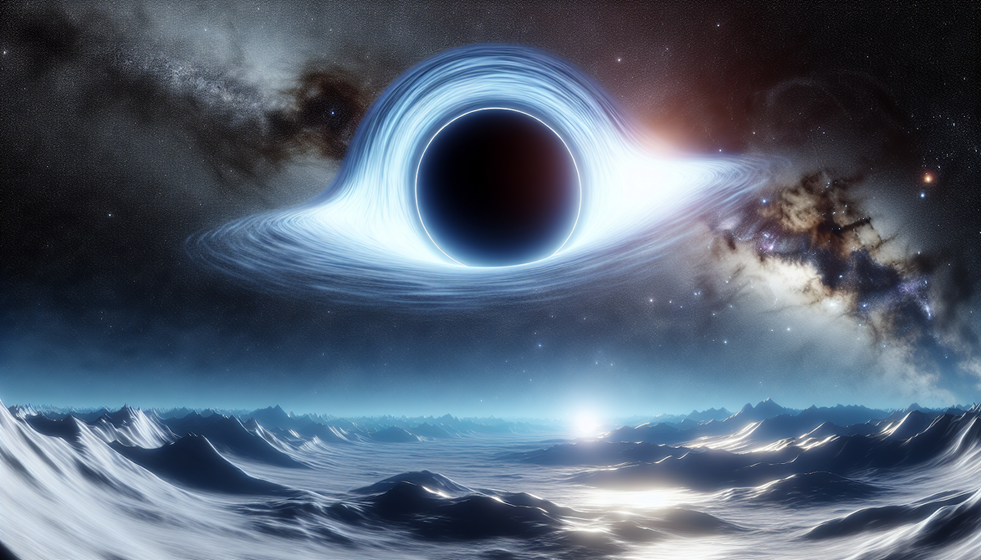When you hear “black hole,” what’s the first thing that comes to mind? Probably a strange, mysterious void… maybe even the idea of things being swallowed forever into an inescapable abyss. That wouldn’t be wrong. But here’s where it gets weird — despite all their intensity, black holes are actually some of the coldest things in the universe.
Yes, you read that right: black holes are cold. Freezing cold. We’re talking fractions of a degree above absolute zero. And the reason why is one of the most fascinating stories in modern physics.
But wait — how can something that devours light be cold?
For most of us, it just doesn’t compute. These cosmic beasts tear stars apart, bend space and time, and unleash powerful radiation near their edges. Surely, they must be burning hot — right?
That’s what scientists assumed for decades until one incredible idea flipped the whole thing upside down.
Hawking’s “impossible” idea changed everything
In 1974, a young physicist named Stephen Hawking introduced something radical: black holes aren’t exactly black. He proposed that they emit a faint, subtle stream of particles — now called Hawking radiation — due to bizarre quantum effects at the edge of the event horizon.
At first, the physics community was skeptical. It felt impossible. But Hawking’s calculations were brutal, elegant, and ultimately correct. What he proved was this:
- Black holes have a temperature — they aren’t completely inert.
- The bigger the black hole, the lower its temperature.
Here’s where it gets mind-blowing
Temperature is inversely proportional to mass. That means the more massive the black hole, the colder it is.
For example, a black hole with the mass of our Sun? It would have a temperature of about 0.00000006 Kelvin (-273,1°C). That’s unimaginably cold — way colder than the cosmic microwave background radiation that fills space at 2.7 Kelvin.
Translation? These black holes aren’t radiating; they’re absorbing — slowly soaking up energy from the universe around them.
Why does so little radiation escape?
This goes back to the quantum level. Tiny particle-antiparticle pairs are constantly popping in and out of existence near the event horizon — the boundary of a black hole. Occasionally, one particle gets pulled into the black hole, while the other escapes as Hawking radiation.
But this escape trick is astonishingly rare for large black holes. So rare, in fact, that their radiation is almost zero. That’s why their temperatures hover just above absolute zero.
The smaller the black hole, the hotter it gets
Now here’s a twist: the smaller a black hole gets, the more radiation it emits — and the hotter it becomes.
In laboratory simulations, researchers have even created “black hole analogues” — mimicking event horizons using flowing water, Bose-Einstein condensates, or lasers. These experiments, while not cosmic black holes, confirmed that event horizons could “radiate” energy in environments governed by quantum rules.
- In 2016, researchers at the Technion–Israel Institute of Technology created a sonic black hole using sound waves in a gas cloud and reported analog Hawking radiation.
- In 2020, Canadian physicists used laser-induced optical event horizons to produce Hawking-like radiation in a lab, reinforcing Hawking’s prediction.
So, what does all this tell us?
Black holes, the terrifying cosmic monsters we once feared, may one day fizzle out—not with a bang, but a whisper of fading radiation. And the colder they are, the longer they last.
The most massive black holes in the centers of galaxies? They could last trillions upon trillions of years, slowly absorbing more of the universe and growing ever colder while doing so.
In the end, cold isn’t absence — it’s power
So next time you imagine a black hole, don’t picture fiery doom. Picture silence. Stillness. A cosmic freezer so powerful it warps space and time itself, hiding its secrets behind gravitational shadows.
And if that doesn’t give you chills — quite literally — nothing will.




Leave a Comment